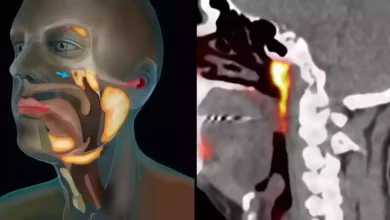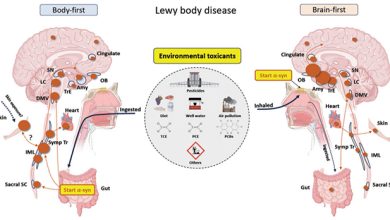To fight mosquitoes, L.A. is releasing thousands of other mosquitoes

In Los Angeles, those waging war against mosquitoes are adding a weapon to their arsenal: more mosquitoes.
The Greater Los Angeles County Vector Control District launched a pilot program Thursday to release tens of thousands of irradiated laboratory-raised mosquitoes into the local environment. These mosquitoes are all male and have been sterilized by radiation. So the hope is that they will find wild females and impregnate them with dead-end sperm, rendering the resulting eggs worthless.
The target is a particular species, Aedes aegypti. The insects, which began populating Los Angeles County in 2014, have evolved to focus on one thing: you.
“Thousands of years ago, a strain of Aedes aegypti settled near people and began to specialize in living near houses and biting people,” said Daniel Hahn, a professor in the Department of entomology and nematology at the University of Florida. “They are characterized as aggressive biters because they will bite you all day long.”
Aedes Aegypti thrives in gardens and takes up residence in small containers like bottle caps and dog bowls. They can carry worrying diseases such as yellow fever, Chikungunya, Zika and dengue.
“We know our residents are hurting,” said Susanne Kluh, executive director of the Greater Los Angeles County Vector Control District, which serves 6 million people and has more than 90 full-time employees.
The district released about 20,000 sterile male mosquitoes, dyed to appear fluorescent under a black light, on Thursday as part of the final test of its pilot program. Male Aedes Aegypti mosquitoes do not bite, so experts say the program poses almost zero risk to humans.
Next month, the district plans to release seven to 10 sterile mosquitoes for every wild male they say lives in the target region, the Sunland-Tujunga area of Los Angeles. This could represent up to 60,000 mosquitoes per week.
This strategy is an example of how humans are deploying new technologies to combat the spread of invasive mosquitoes and the diseases they can carry, as climate change, global trade and urbanization propel the pests on new horizons. new territories.
“They evolved specifically to exploit humans as hosts, and so we are constantly in an arms race against them,” Hahn said.
An expanded range for aggressive mosquitoes
The Aedes Aegypti mosquito is not native to the United States but has been present in some areas for hundreds of years. They even played a central role in American history: in 1793, they forced some federal officials to flee Philadelphia, when the city was the seat of the American government, due to a yellow fever epidemic.
In recent years, researchers have warned that higher temperatures due to climate change will expand the species’ range. This appears to be what happened in Southern California.
The state recorded its first two cases of locally acquired dengue fever last year, meaning local mosquitoes were transmitting the virus.
“Everyone always said, well, our weather isn’t great, but you know, mosquitoes are adapting and our weather has changed,” Kluh said. “We get more humidity in the summer and people create these ideal little humid climates in their garden, with lush plants and everything.”
The region has also experienced urban and suburban sprawl, which has expanded the habitat of Aedes Aegypti.
Fight mosquitoes with mosquitoes
The weaponized mosquitoes were bred in a Kentucky lab but developed from eggs from the Los Angeles area. Each week, the Vector District plans to hatch mosquitoes in tiny insect dormitories, then administer radiation to them from a specialized machine. Once released, the irradiated mosquitoes will only fly about 150 meters, Kluh said.
Hahn, who is not involved in the Los Angeles project, said the radiation blast destroys chromosomes in mosquito cells, preventing reproduction while allowing the insects to fly and perform other functions. biological functions at near-normal levels.
Kluh said the mosquitoes would not be radioactive and pose no risk to the public.
The district spent about $255,000 of its $24.8 million annual budget on the program, she added: “We did it inexpensively.” »
Still, Kluh said it would be difficult to expand the program to more of Los Angeles County. Instead, she envisions it as a targeted treatment for Aedes Aegypti hot spots and areas where cases of mosquito-borne illnesses are reported.
Other regions are pursuing similar technology. In Florida, Lee County launched a sterile, irradiated mosquito release program in 2017. Several other districts in California are also testing the program or have purchased irradiators.
New approaches to pest control
The idea of irradiating pests to reduce populations is not new. The agricultural industry has been irradiating male fruit flies for about three decades, according to Hahn.
Mosquito control programs were developed 40 years ago, he said, but were ultimately “left behind because they weren’t cost-effective.”
Since then, however, mosquitoes have evolved to resist some common pesticides, requiring new solutions.
Some companies are researching other technologies to combat Aedes Aegypti, such as genetically modifying male mosquitoes so that they kill females, releasing male mosquitoes carrying a particular bacteria, or seeding a dominant gene into the population to reduce numbers.
Hahn said some of these ideas carry the risk of unintended consequences, but are nonetheless worth investigating. These technologies are regulated by the Environmental Protection Agency and some are tested in small pilot programs.
But irradiation programs are unregulated, making them the weapon of choice in the United States today.
“We wanted to start something now,” Kluh said.
News Source : www.nbcnews.com
Gn Health



